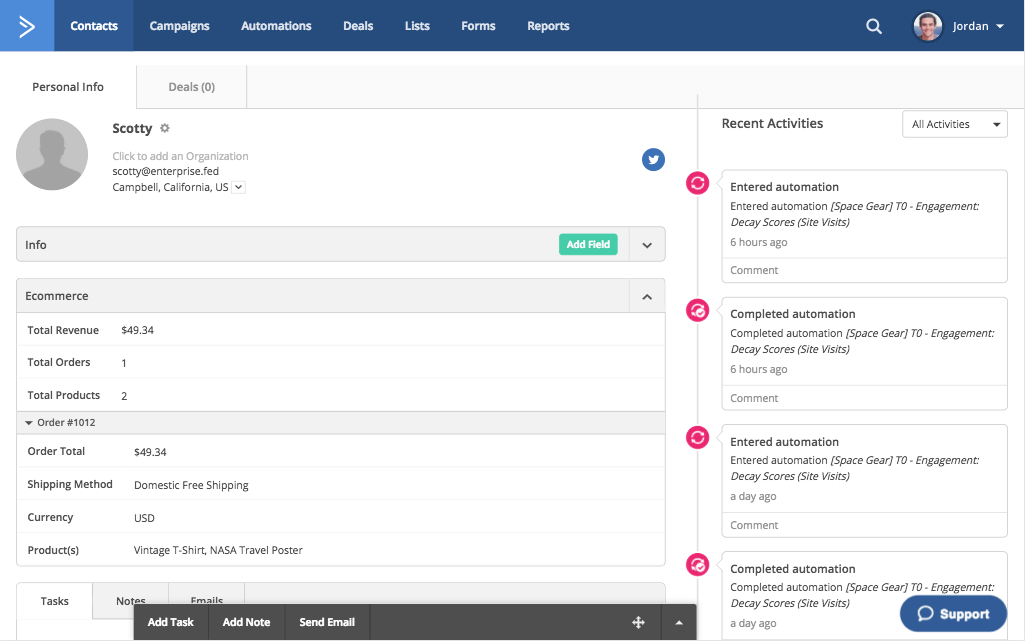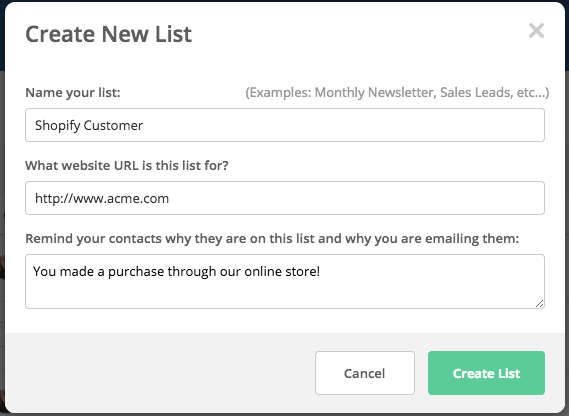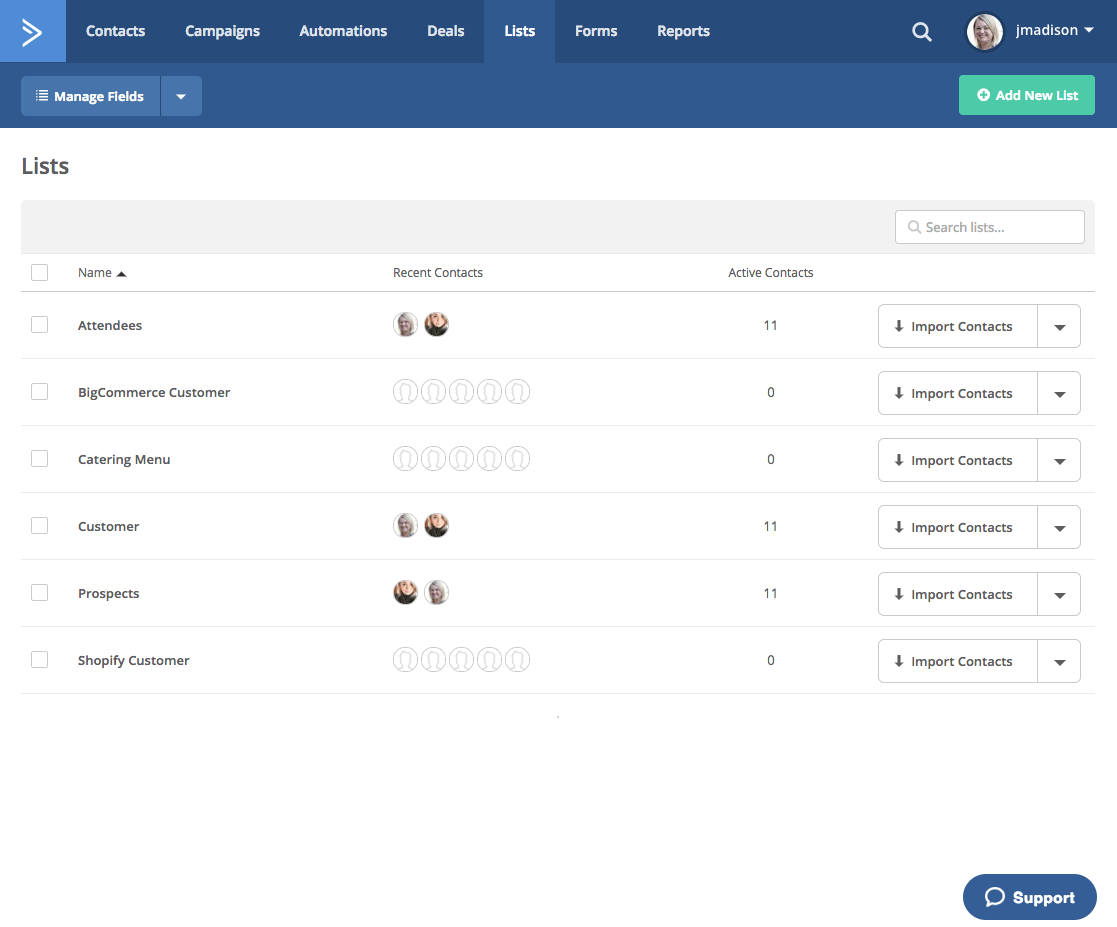Deep Data integrations bring valuable third party data into the ActiveCampaign platform in a deeper way. Currently, we offer integrations with Shopify and BigCommerce, with more on the way.
Deep Data allows you to look to your ActiveCampaign account for an increasing amount of intelligence about your overall business. Our software pulls in vital purchase data through our integrations. And you aren’t limited to just viewing the data in one place: this data is actionable.
More information gives you the power to make more choices, and interact with your contacts in a deeper way. Let’s take a look at how to get started, and what you can do with this valuable information. (If you need help setting up your integration, check out our Help Center article.)
The Basics
When linking your ActiveCampaign platform with one of our Deep Data integrations, you immediately have the ability to pull in ecommerce data. But there is some set-up work to be done to make your data as impactful as possible.
Imported Fields
The fields imported from via Deep Data include:
- Product Name
- Product Category
- Product ID
- Order Price
- Order Currency
- Order Shipping Method
Automatically Added Tag
The Shopify and BigCommerce integrations automatically add tags to customer contact records. The tags are:
- shopify-customer
- bigcommerce-customer
Since these tags are automatically applied, you will always know when a contact record was created by your integration.
Ecommerce Field
After integrating with your ecommerce store, your ActiveCampaign contacts will have a new Ecommerce section on their contact record.

Here you will be able to see the total revenue, how many orders they’ve placed, and the number of products. You will also be able to see individual order data on the dropdown Order # field.
Add to List
Now that your integration is complete, you will want to create a customer list. Create a new list for your ecommerce leads in the Lists tab.

To add contacts imported from your ecommerce store to your new list, do an advanced search within your list to pull up customers with the ecommerce tag.

After completing your search, you can bulk edit the contacts to add them to the list.

These customers are now on your ActiveCampaign ecommerce customer list. However, to ensure that future customers are added to the same list, you will now create a new automation.
Add to List with Makes a Purchase Trigger
After someone becomes a customer, you can easily, automatically, add them to your list of customers. Simply create an automation with the new “Makes a Purchase” trigger to add all future customers to your customer list.

Adding your contacts to a list enables you to easily contact your entire customer base. Tags are easily removed or added, but a list serves to keep your customers in one place.
Enter Automations
There are several automations you may want to create with your ecommerce data. For example, you can again leverage the “Makes a Purchase” trigger in order to ask them for a review. Simply select your integration when you chose your start trigger. Select “runs multiple times” to have a contact enter this automation every time they complete an order.

After you select your integration, you can build your automation as per usual. In this example, we wait a week after purchase and then send an email requesting a review.

If they complete our review form, we’ll give them a tag as a Product Reviewer, and send an email thanking them and rewarding them with a coupon.

Custom Fields
Let’s say you have a store that sells a poster and a t-shirt. When the Deep Data integration pulls in the information for “Product Name,” you now have actionable data.
Simply create an automation that will add a tag for product name. First, you can create an automation with a start trigger of Makes a Purchase, and segment that data by Product Name is Poster.

The following automation will add the tag “Purchased Poster” to anyone who bought that product.

You can easily create tags for all of your imported data in this way.
Note: You can sort by Product Category in this way as well, if you have set up your ecommerce shop accordingly. This will help you sell your product by type, as opposed to just the name of individual products.
Personalization
Purchase data synching with ActiveCampaign gives you the opportunity to personalize your content based on what people have purchased. Our guide on conditional content can give you a few ideas.
In the case of the poster and t-shirt shop, you may want to create one email for a special sale to get people to purchase the opposite product. So, anyone who has purchased a poster will receive an email with a discount for a similar shirt, and anyone who purchased a t-shirt will be sent a similar poster.
The customers who have purchased a t-shirt, but not a poster, will be sent an email with conditional content that they have the tag “Previous Purchase: tshirt” and do NOT have the tag “Previous Purchase: Poster”.

Customers who have purchased a poster, but not a t-shirt, will receive the same email, but with conditional content flipped. These contacts have the tag “Previous Purchase: Poster” and do NOT have the tag Previous Purchase: tshirt”.

Now you have used your purchase data from your ecommerce store and made it actionable within ActiveCampaign.
Review
To review, these are the steps you can take to get your automations and Deep Data integration setup for the first time. Your strategy is vitally important moving forward. What types of products would you like to promote to past customers? What types of lists should you create? What promotions work with your base? You can test these actions and more by leveraging your ecommerce data for marketing automations.
This is only the beginning of what is possible with Deep Data in ActiveCampaign. We’ll continue to show new and impactful ways to act upon your ecommerce data. What types of campaigns, automations or actions would you like to see? Let us know in the comments below.
